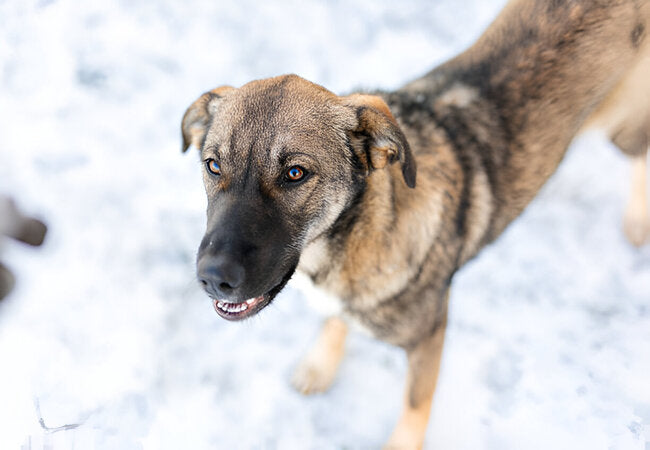How to Manage Clingy Dog Behavior in 2025 – Vet‑Approved Guide for Velcro Dogs 🐶❤️

In this article
How to Manage Clingy Dog Behavior in 2025 – Vet‑Approved Guide for Velcro Dogs 🐶❤️
By Dr. Duncan Houston BVSc
Does your dog stick to your side like Velcro? While being followed by your furry friend can feel heartwarming, excessive clinginess may indicate anxiety, learned behavior, or even cognitive decline. In this 2025 guide, I’ll explore the roots of clingy behavior, teach empathic independence methods, and outline strategies to support both attachment and healthy alone-time—so your pup feels secure, not stressed. Let’s build confidence, cuddle by cuddle. 😊
1. What Is Clingy, or “Velcro” Behavior?
Clingy dogs—often called Velcro dogs—follow their owners obsessively, demand constant attention, become anxious when alone, or exhibit whining and restlessness if you go out of sight.
2. Why Are Dogs Clingy?
A. Learned Reinforcement
If every time your dog nudges you they get treats, petting, or food, they learn that being close is rewarding.
B. Anxiety or Stress
Clinginess often stems from separation anxiety or general fear. According to PetMD, clinginess is a key symptom—often alongside destruction or vocalization—when owners depart.
C. Age-Related or Health Changes
Older dogs with sensory loss or early-stage cognitive decline may become clingier as their world changes.
D. Breed & Temperament Factors
Some breeds—like Labs, Papillons, and Shepherds—form strong bonds and are naturally more attached.
3. Signs to Watch For
- Follows you everywhere—even the bathroom or kitchen.
- Pawing, whining, and barking when you pay attention to other activities.
- Becomes unsettled or destructive when left alone.
4. Vet Check: Rule Out Medical Causes
- Run a vet check—pain, sensory loss, or cognitive decline may be triggers.
- Consider adjusting lighting, layout, or adding night lights to support vision loss.
5. Foundations for Independence
A. Physical Exercise
Daily walks and play sessions help drain excess energy—tired dogs are calmer.
B. Mental Enrichment
Food puzzles, snuffle mats, and safe chew toys can distract attention and reduce clinginess.
C. Structured Safe Spaces
Create a dedicated zone—cozy bed, blanket, toys—and teach a cue like, “Go to your spot.” Reward your dog for settling independently.
D. Desensitize Departures
Practice leaving cues (grab keys, put on coat) without leaving. Over time, these movements lose their association with you going away.
6. Behavior Training ♥️ Calm vs Cling
- Ignore attention-seeking that is quiet; reward only calm, independent behavior.
- Use the “300‑peck” technique: step away and return when calm. Gradually increase distance and duration.
- Reinforce “place” or mat training—reward calm presence away from the owner.
7. Managing Separation Anxiety
- Leave engaging food toys or puzzles during departures.
- Create calm routines around exits and returns—low-key departure and paused greetings until calm.
- Consider crate training if it offers a positive haven.
- Use calming tools: Adaptil pheromones, music, snug pressure wraps.
8. Advanced Techniques
- Graduated departures: start with seconds, then minutes—only increase when the dog remains calm.
- Counterconditioning: pair your absence cue with a treat—builds positive emotional responses.
- Use interactive pet cameras or timers to reward calm states remotely.
9. When to Seek Professional Help
- If anxiety leads to destructiveness, self-harm, inappropriate urination, or panic signs.
- If health issues (pain, cognitive decline) are contributing.
- Consider behaviorist-guided therapy or medications for severe cases.
10. 📱 Ask A Vet App 2025 Support
With Ask A Vet, you can:
- 📹 Upload videos of clingy behavior for vet analysis.
- 🧩 Get custom independence-building plans.
- 💬 Access behaviorist support or explore supplements/meds if needed.
Expert guidance helps you balance connection and calm, ensuring your pup is secure and confident. 🐾📲
❤️ Final Thoughts
Clingy behavior often starts with love, but left unchecked, it can mask stress or insecurity. The solution isn’t less love—it’s structured support. In 2025, we embrace compassionate independence-building: exercise, enrichment, gentle behavior training, and vet supervision. The result? A velcro dog who chooses to be near you, not one who needs to. 🐶❤️
Need personalized help? Visit AskAVet.com or download the Ask A Vet app for expert support whenever your dog needs it most.






